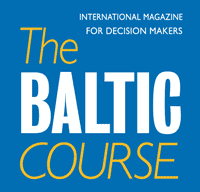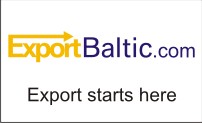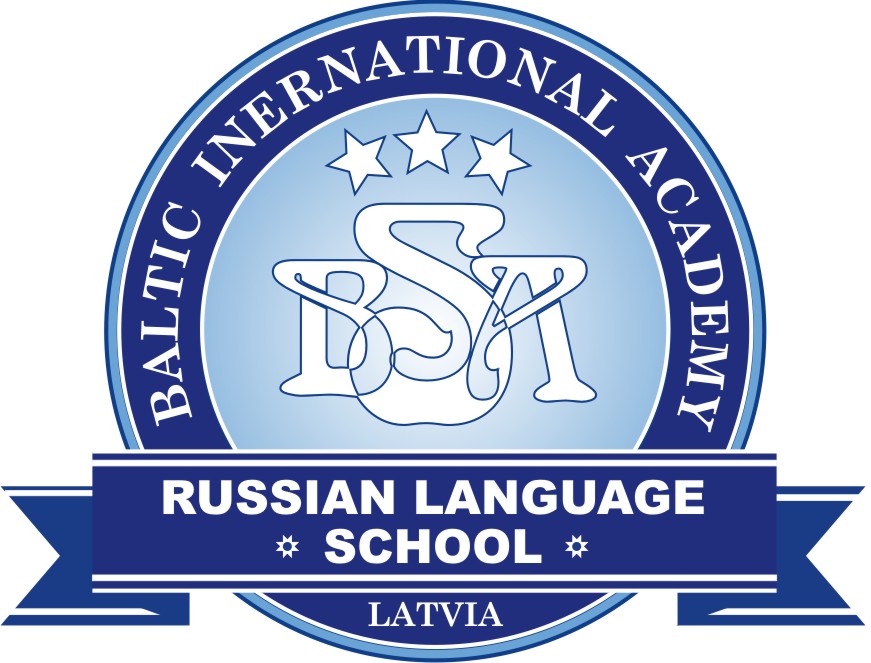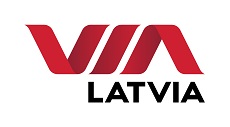Analytics, EU – Baltic States, Foodstuff, Good for Business, Legislation, Markets and Companies
International Internet Magazine. Baltic States news & analytics
Saturday, 01.11.2025, 04:52
New Commission’s report on food quality
 Print version
Print versionRapid Alert System for Food and Feed (RASFF)
Launched in 1979, the Rapid Alert System for Food and Feed (RASFF) is primarily a tool to exchange information between national competent authorities on consignments of food and feed in cases where a risk to human health has been identified and measures have been taken. Examples of such measures are: withholding; recalling; seizure or rejection of the products concerned. This quick exchange of information allows all EU Member States to immediately check whether they are also affected by the problem. Whenever a product is already on the market and should not be consumed, the Member States' authorities are then able to take all urgent measures, including giving direct information to the public, if necessary.
Reference: MEMO/13/524, European Commission, MEMO, Brussels, 10 June 2013
RASFF’s aim and purpose
The swift exchange of information among the RASFF members on food and feed related risks ensures coherent and simultaneous actions by all RASFF members.
The publication of notifications through the RASFF portal database makes consumers aware that we are active in this domain. Consumers can get access to an online database allowing them to see information relating to RASFF notifications the latest 24 hours after their transmission in the RASFF network. Thanks to the work carried out by the RASFF, and depending on different technical and scientific criteria such as nature, seriousness and extent of the risk, public health authorities can take the appropriate steps to inform the general public of the nature of the risk, type of food or feed involved and the measures taken to prevent, reduce or eliminate that risk.
Practical implication
It is important that the problem is notified: member states use a template to provide all relevant and useful information such as identification of the product, hazards found, measures taken and traceability information of the product. Once the information received through the system, other Member States will check if they are concerned. If the product is on their market they will be able to trace it using the information they find in the notification. They will report back to the RASFF on what they have found and what measures they have taken. In case of products produced in EU, the Member State of origin will also report to RASFF the outcome of its investigations into the origin and distribution of the product and the cause of the problem identified. This allows other Member States to take rapid action if required.
Criteria for notification to the RASFF
The criteria for notification to the RASFF are provided in Article 50 of Regulation (EC) N° 178/2002. (See: Official Journal, L 60, 1.3.2002, p. 70–80).
Whenever a member of the network has any information relating to the existence of a serious direct or indirect risk to human health deriving from food or feed, this information is immediately notified to the Commission under the RASFF. The Commission immediately transmits this information to the members of the network.
Article 50(3) of the Regulation gives further criteria for when a RASFF notification is required:
“Without prejudice to other Community legislation, the Member States shall immediately notify the Commission under the rapid alert system of:
= any measure they adopt which is aimed at restricting the placing on the market or forcing the withdrawal from the market or the recall of food or feed in order to protect human health and requiring rapid action;
= any recommendation or agreement with professional operators which is aimed, on a voluntary or obligatory basis, at preventing, limiting or imposing specific conditions on the placing on the market or the eventual use of food or feed on account of a serious risk to human health requiring rapid action;
= any rejection related to a direct or indirect risk to human health, of a batch, container or cargo of food or feed by a competent authority at a border post within the European Union.”
Membership in the RASFF system
The RASFF network comprises of: EU Member States; EEA countries (Norway, Liechtenstein and Iceland); EFTA Secretariat coordinating the input from the EEA countries; European Food Safety Authority (EFSA); and the Commission as the manager of the system. Since 1 January 2009, Switzerland became a partial member of the system after they concluded an agreement with the EU eliminating border controls between the EU and Switzerland for products of animal origin. From 1 July 2013, Croatia will become a new member of the RASFF.
Main findings of the RASFF annual report for 2012
In 2012 the number of RASFF notifications reached a total of 8797, representing a 3.9% decrease compared to 2011. Of those, 3516 were original notifications (40 %) and 5281 were follow-up notifications (60%). These figures represent a 7.8% decrease in original notifications and a 1.2% decrease in follow-up notifications. A total of 526 alert notifications reporting on serious risks found in products on the market, which marked decrease of 14% compared to 2011.
Of the 3516 original notifications transmitted in RASFF in 2012, 332 concerned feed (9.4%) and regarding food contact materials, 299 notifications were counted (8.5%). These figures are in line with what was reported in 2011. 2885 original notifications were related to food.
Hazards and products covered by the top notifications:
Overall notifications and decrease in food safety
There are many factors that influence notifications to RASFF. Nonetheless, no change in these factors can be identified that may have caused the decrease although no figures are available to RASFF on the level of food safety checks in the member countries in 2012 compared to the previous years. It is important to note that there was no decrease for so-called follow-up notifications on problems reported for products placed on the market in the EU. This means that RASFF is used ever more intensively to follow up on these problems. As a consequence, these problems will be solved more rapidly and measures will be put in place to prevent them from happening again.
The RASFF’s role in the recent horse meat scandal
RASFF is primarily a platform to exchange information on food safety issues and not on fraud. However, the Commission decided to use the RASFF system to notify this case because the system is able to collect and report on complex traceability which was a key issue in this incident.
It is important to highlight that thanks to the RASFF, the Irish food safety authority, which originally discovered that some processed foods labelled as 100% beef contained horsemeat, was able to swiftly alert its European partners. As a result of a monitoring programme, launched by the Commission, over 70 RASFF notifications were sent which led to over 300 follow-up notifications to trace the products and withdraw them from the market.
The horsemeat scandal has raised a legitimate need to exchange information on cases of food fraud which is an emerging phenomenon. To address this issue the Commission has prepared a 5 point Action Plan to tackle fraudulent practices. The plan aims to close the gaps identified in the wake of the horsemeat scandal including setting up a procedure for the rapid exchange of information and alerts in cases which may constitute food fraud (See: IP/13/520).
RASFF 2012 – Breakdown by Member State of top 5 most notified product category/hazard combination
|
Origin |
Product category |
Hazard |
Product category |
Hazard |
Product category |
Hazard |
Product category |
Hazard |
Product category |
Hazard |
|
Austria |
feed materials |
Salmonella Agona |
feed materials |
Salmonella Mbandaka |
nuts, nut products and seeds |
aflatoxins |
fruits and vegetables |
omethoate |
fruits and vegetables |
monocrotophos |
|
Belgium |
nuts, nut products and seeds |
aflatoxins |
dietetic foods, food supp., fortified foods |
unauthorised irradiation |
feed materials |
too high count of Enterobacteriaceae |
feed materials |
Salmonella spp. |
feed materials |
aflatoxins |
|
Bulgaria |
fruits and vegetables |
formetanate |
fruits and vegetables |
procymidone |
fruits and vegetables |
tetradifon |
fruits and vegetables |
oxamyl |
fruits and vegetables |
clofentezine |
|
Cyprus |
food contact materials |
migration of primary aromatic amines |
cephalopods and products thereof |
arsenic |
feed materials |
aflatoxins |
food contact materials |
migration of formaldehyde |
food contact materials |
migration of lead |
|
Czech Republic |
cereals and bakery products |
insufficient labelling |
food contact materials |
material abrading |
food contact materials |
migration of primary aromatic amines |
food contact materials |
migration of formaldehyde |
nuts, nut products and seeds |
unsuitable organoleptic characteristics |
|
Denmark |
fruits and vegetables |
aflatoxins |
meat and meat products (other than poultry) |
prohibited substance chloramphenicol |
feed materials |
high count of Enterobacteriaceae |
herbs and spices |
Salmonella spp. |
poultry meat and poultry meat products |
Salmonella enteritidis |
|
Estonia |
food contact materials |
migration of formaldehyde |
feed materials |
Salmonella |
fish and fish products |
parasitic infestation with Anisakis |
food contact materials |
migration of lead |
feed materials |
Salmonella spp. |
|
Finland |
fruits and vegetables |
too high content of sulphite |
non-alcoholic beverages |
too high content of E 210 - benzoic acid |
dietetic foods, food supp, fortified foods |
unauthorised substance 1,3 dimethylamylamine |
nuts, nut products and seeds |
aflatoxins |
dietetic foods, food supp., fortified foods |
unauthorised substance tadalafil |
|
France |
fruits and vegetables |
aflatoxins |
herbs and spices |
profenofos |
herbs and spices |
bifenthrin |
herbs and spices |
triazophos |
herbs and spices |
diethion |
|
Germany |
nuts, nut products and seeds |
aflatoxins |
fruits and vegetables |
aflatoxins |
poultry meat and poultry meat products |
unauthorised substance clopidol |
food contact materials |
migration of formaldehyde |
meat and meat products (other than poultry) |
shigatoxin-producing Escherichia coli |
|
Greece |
nuts, nut products and seeds |
aflatoxins |
nuts, nut products and seeds |
Salmonella spp. |
feed materials |
Salmonella spp. |
fruits and vegetables |
too high content of sulphite |
nuts, nut products and seeds |
Salmonella Mbandaka |
|
Hungary |
soups, broths, sauces and condiments |
attempt to illegally import |
nuts, nut products and seeds |
infested with larvae of insects |
feed materials |
Salmonella Senftenberg |
cereals and bakery products |
undeclared peanut |
cocoa and cocoa preparations, coffee and tea |
undeclared hazelnut |
|
Ireland |
dietetic foods, food supp., fortified foods |
unauthorised substance 1,3 dimethylamylamine |
food contact materials |
migration of primary aromatic amines |
poultry meat and poultry meat products |
unauthorised substance clopidol |
food contact materials |
migration of DEHP - di(2-ethylhexyl) phthalate |
prepared dishes and snacks |
high content of aluminium |
|
Italy |
food contact materials |
migration of chromium |
fish and fish products |
mercury |
food contact materials |
migration of manganese |
food contact materials |
migration of nickel |
fish and fish products |
parasitic infestation with Anisakis |
|
Latvia |
dietetic foods, food supp., fortified foods |
unauthorised irradiation |
dietetic foods, food supp., fortified foods |
benzethonium chloride |
food contact materials |
migration of formaldehyde |
non-alcoholic beverages |
unauthorised use of colour E 127 - erythrosine |
dietetic foods, food supp., fortified foods |
irradiation in an unauthorised facility |
|
Lithuania |
dietetic foods, food supp., fortified foods |
irradiation in an unauthorised facility |
dietetic foods, food supp., fortified foods |
unauthorised irradiation |
dietetic foods, food supp., fortified foods |
high content of lead |
fats and oils |
benzo(a)pyrene |
nuts, nut products and seeds |
aflatoxins |
|
Luxembourg |
food contact materials |
migration of formaldehyde |
food contact materials |
migration of melamine |
dietetic foods, food supp., fortified foods |
unauthorised substance sibutramine |
non-alcoholic beverages |
E 210 - benzoic acid unauthorised |
other food product / mixed |
ochratoxin A |
|
Malta |
fish and fish products |
mercury |
fruits and vegetables |
aflatoxins |
food contact materials |
improper health certificate(s) |
fish & fish products |
histamine |
crustaceans and products thereof |
too high content of sulphite |
|
The Netherlands |
nuts, nut products and seeds |
aflatoxins |
feed materials |
aflatoxins |
fruits and vegetables |
methomyl |
herbs and spices |
Salmonella spp. |
food contact materials |
migration of formaldehyde |
|
Poland |
nuts, nut products and seeds |
infested with mites |
food contact materials |
migration of lead |
nuts, nut products and seeds |
living and dead mites |
dietetic foods, food supp., fortified foods |
unauthorised substance 1,3 dimethylamylamine |
food contact materials |
migration of cadmium |
|
Portugal |
food contact materials |
migration of epoxidised soybean oil (ESBO) |
other food product / mixed |
high content of aluminium |
cereals and bakery products |
unauthorised genetically modified |
poultry meat and poultry meat products |
unauthorised substance clopidol |
dietetic foods, food supp., fortified foods |
unauthorised novel food |
|
Romania |
fruits and vegetables |
imazalil |
fish and fish products |
parasitic infestation with Anisakis |
nuts, nut products and seeds |
aflatoxins |
dietetic foods, food supp., fortified foods |
absence of health certificate(s) |
dietetic foods, food supp., fortified foods |
attempt to illegally import |
|
Slovakia |
fruits and vegetables |
unauthorised food additive formic acid |
honey and royal jelly |
sulfamethoxazole unauthorised |
nuts, nut products and seeds |
unsuitable organoleptic characteristics |
herbs and spices |
undeclared celery |
cereals and bakery products |
E 210 - benzoic acid unauthorised |
|
Slovenia |
dietetic foods, food supp., fortified foods |
unauthorised substance sibutramine |
fruits and vegetables |
dimethoate |
cereals and bakery products |
undeclared milk ingredient |
confectionery |
undeclared milk ingredient |
food contact materials |
migration of chromium |
|
Spain |
fish and fish products |
poor temp control - rupture of the cold chain - |
nuts, nut products and seeds |
aflatoxins |
crustaceans and products thereof |
poor temperature control - rupture of the cold chain - |
cephalopods and products thereof |
poor temperature control - rupture of the cold chain - |
dietetic foods, food supp, fortified foods |
unauthorised substance 1,3 dimethylamylamine |
|
Sweden |
meat and meat products (other than poultry) |
Salmonella |
meat and meat products (other than poultry) |
Salmonella typhimurium |
meat and meat products (other than poultry) |
Salmonella spp. |
dietetic foods, food supp., fortified foods |
unauthorised substance 1,3 dimethylamylamine |
feed materials |
Salmonella Mbandaka |
|
UK |
feed materials |
aflatoxins |
fruits and vegetables |
Salmonella spp. |
nuts, nut products & seeds |
aflatoxins |
fruits and vegetables |
monocrotophos |
fruits and vegetables |
acephate |
General reference: http://europa.eu/rapid/press-release_MEMO-13-524_en.htm?locale=en








 «The Baltic Course» Is Sold and Stays in Business!
«The Baltic Course» Is Sold and Stays in Business!

